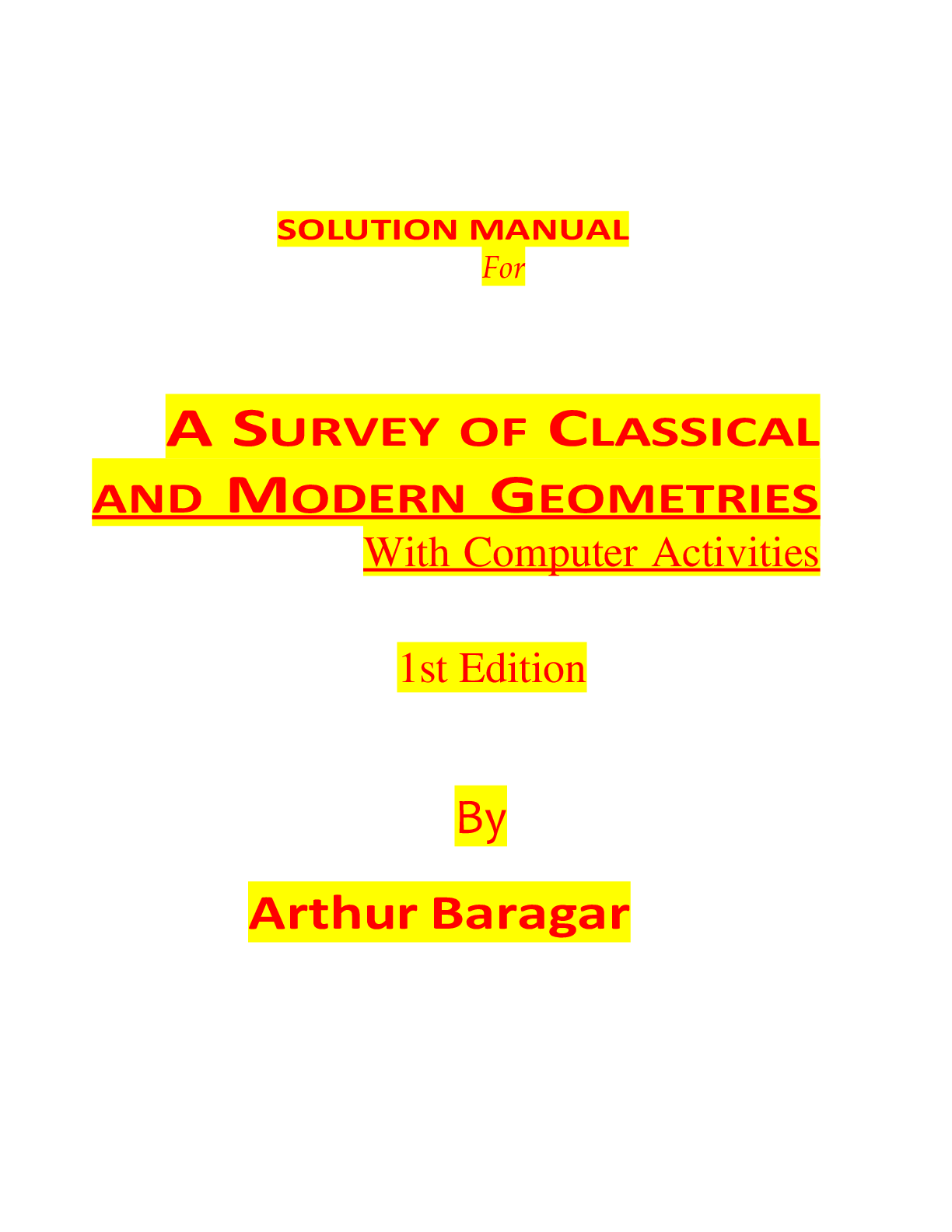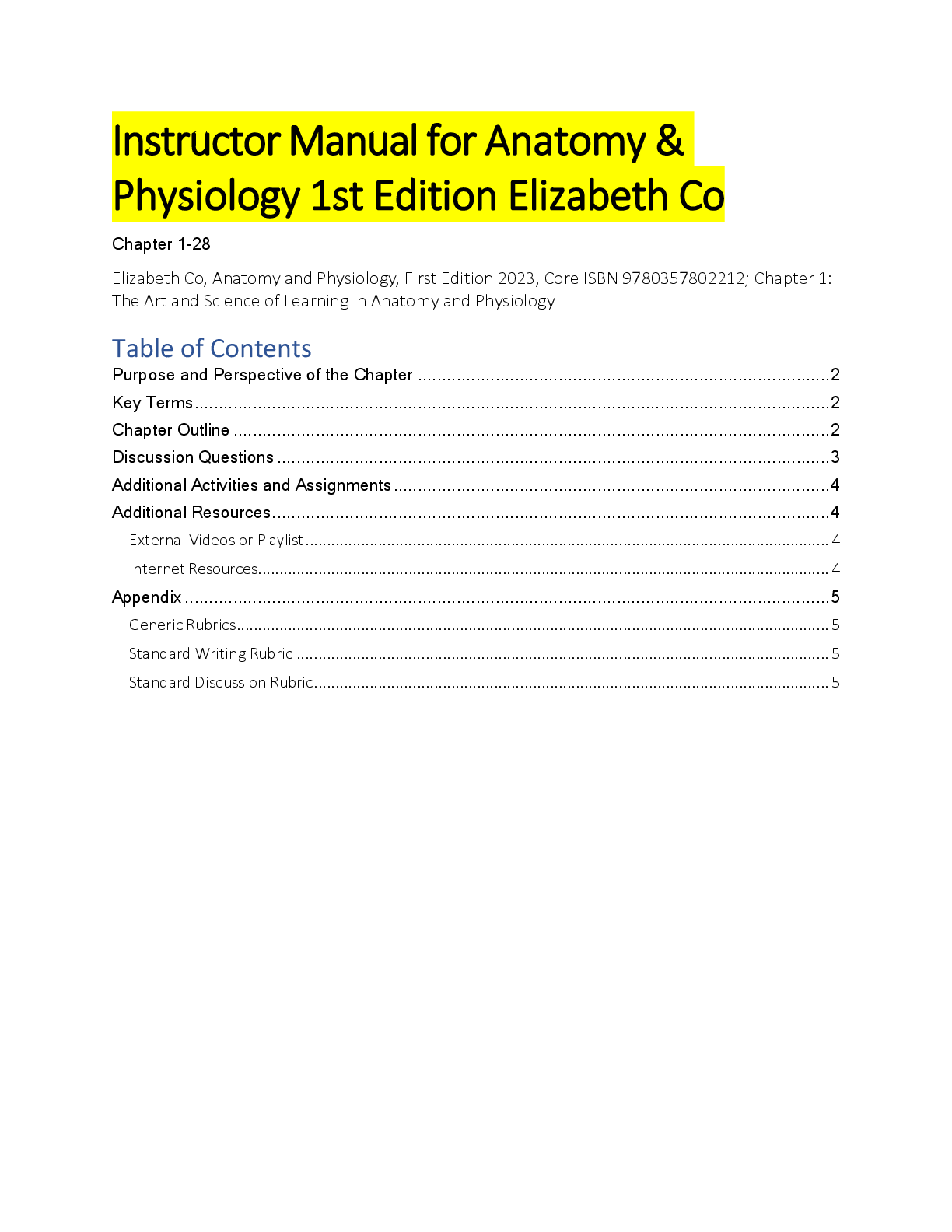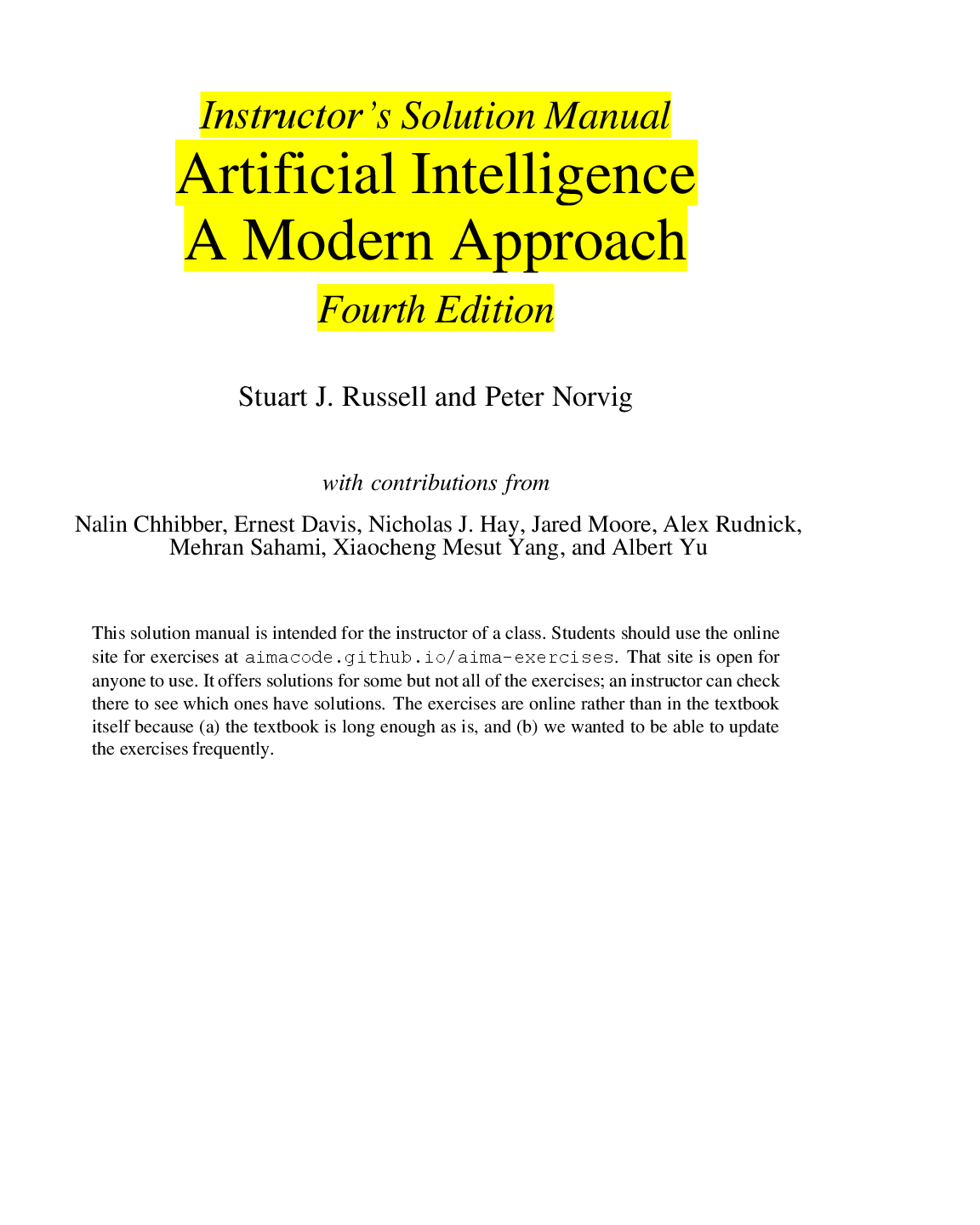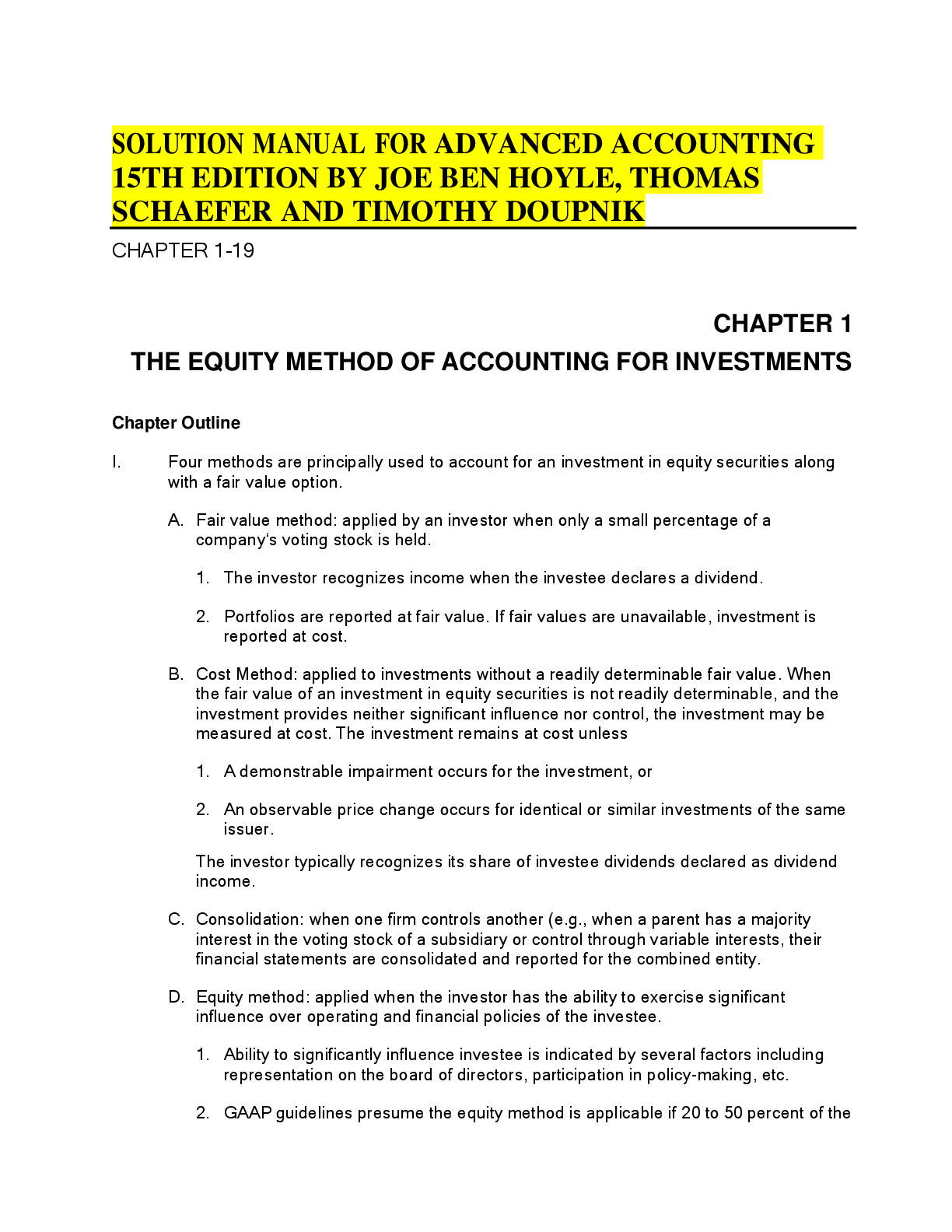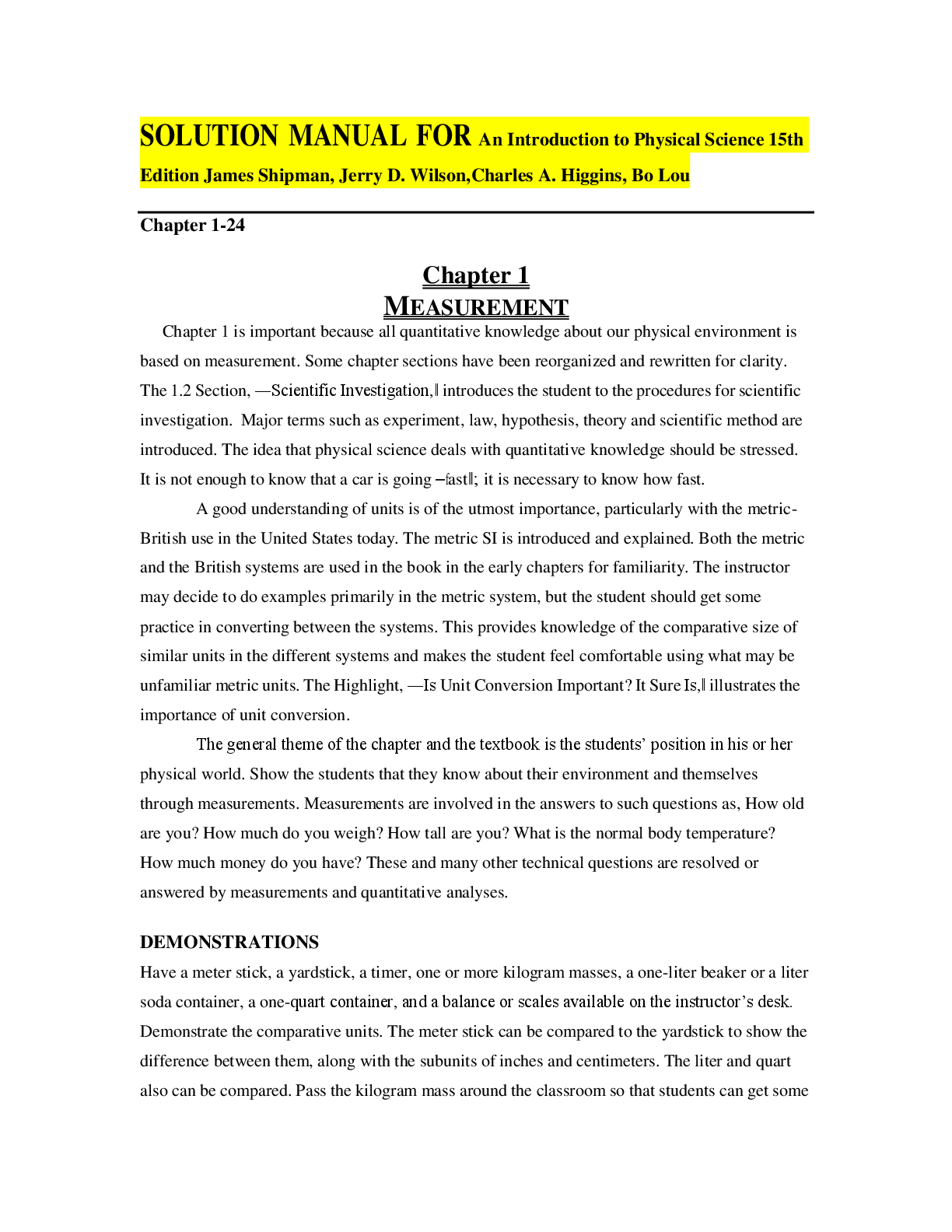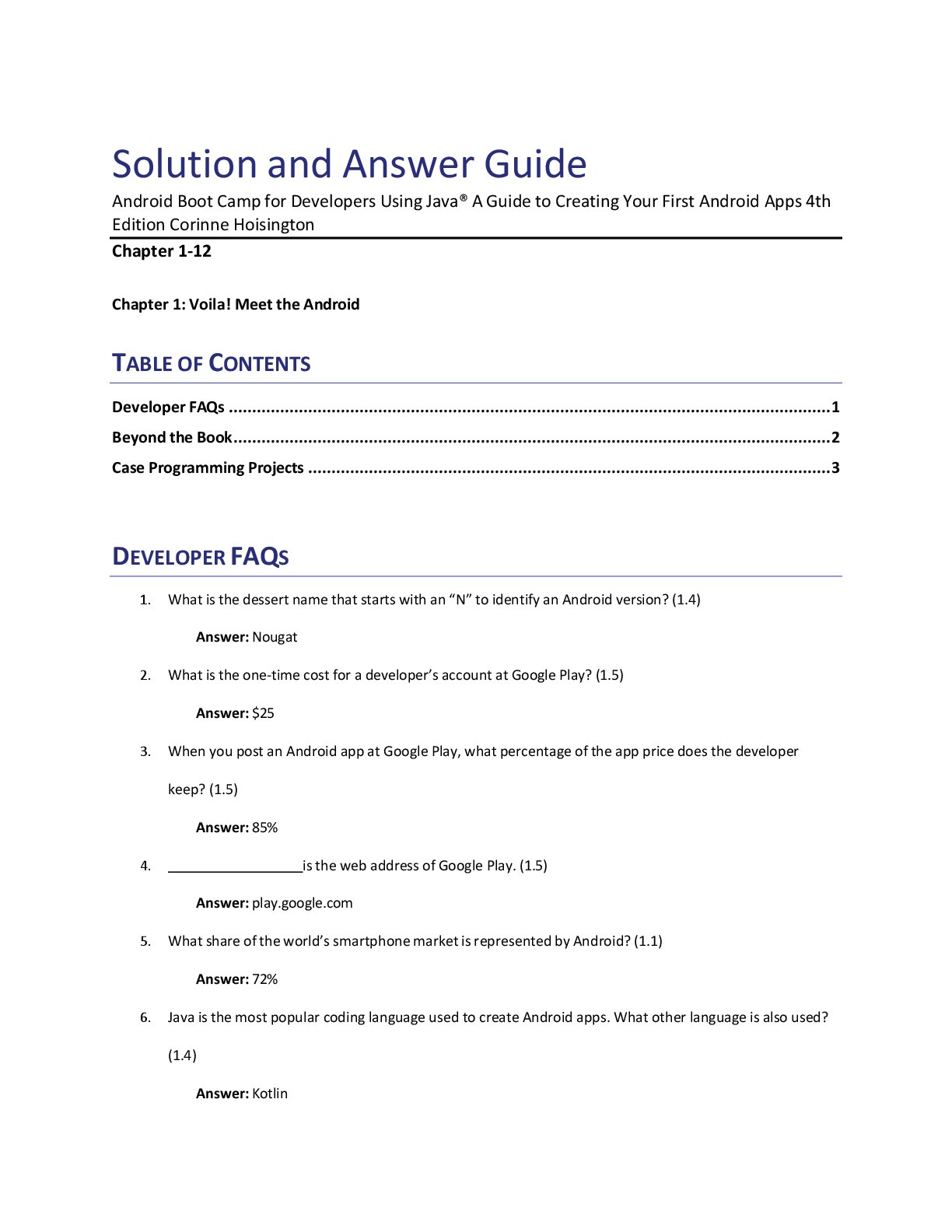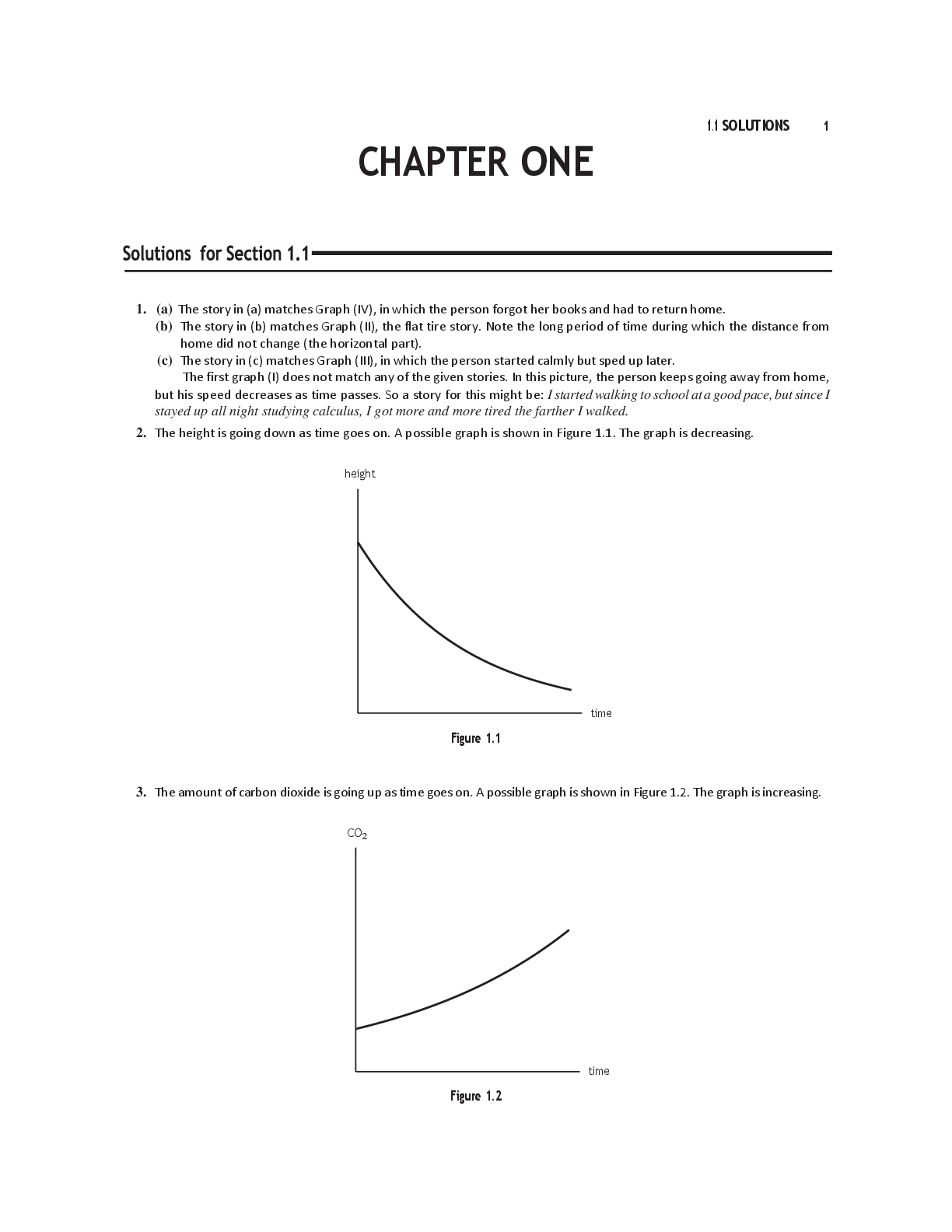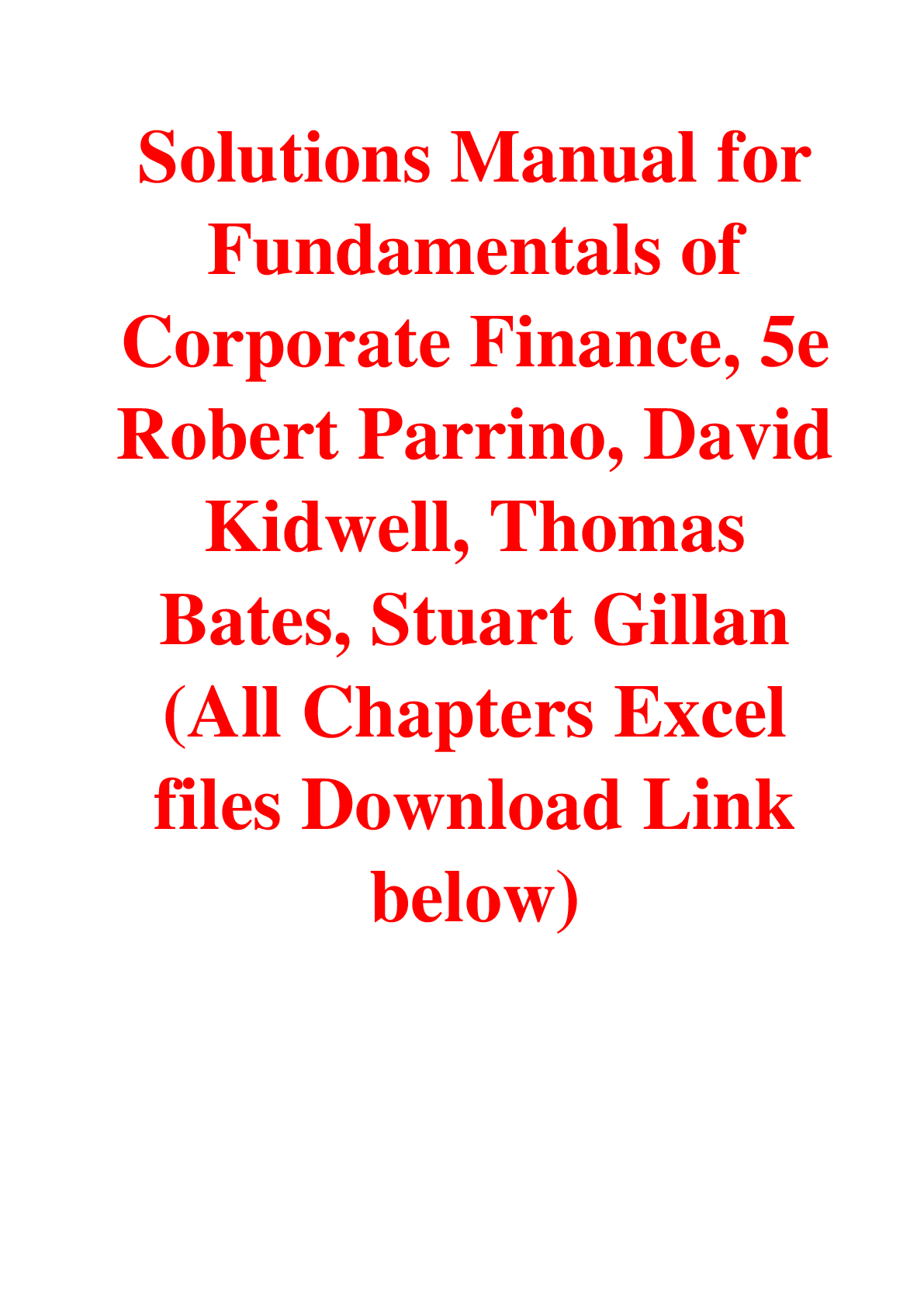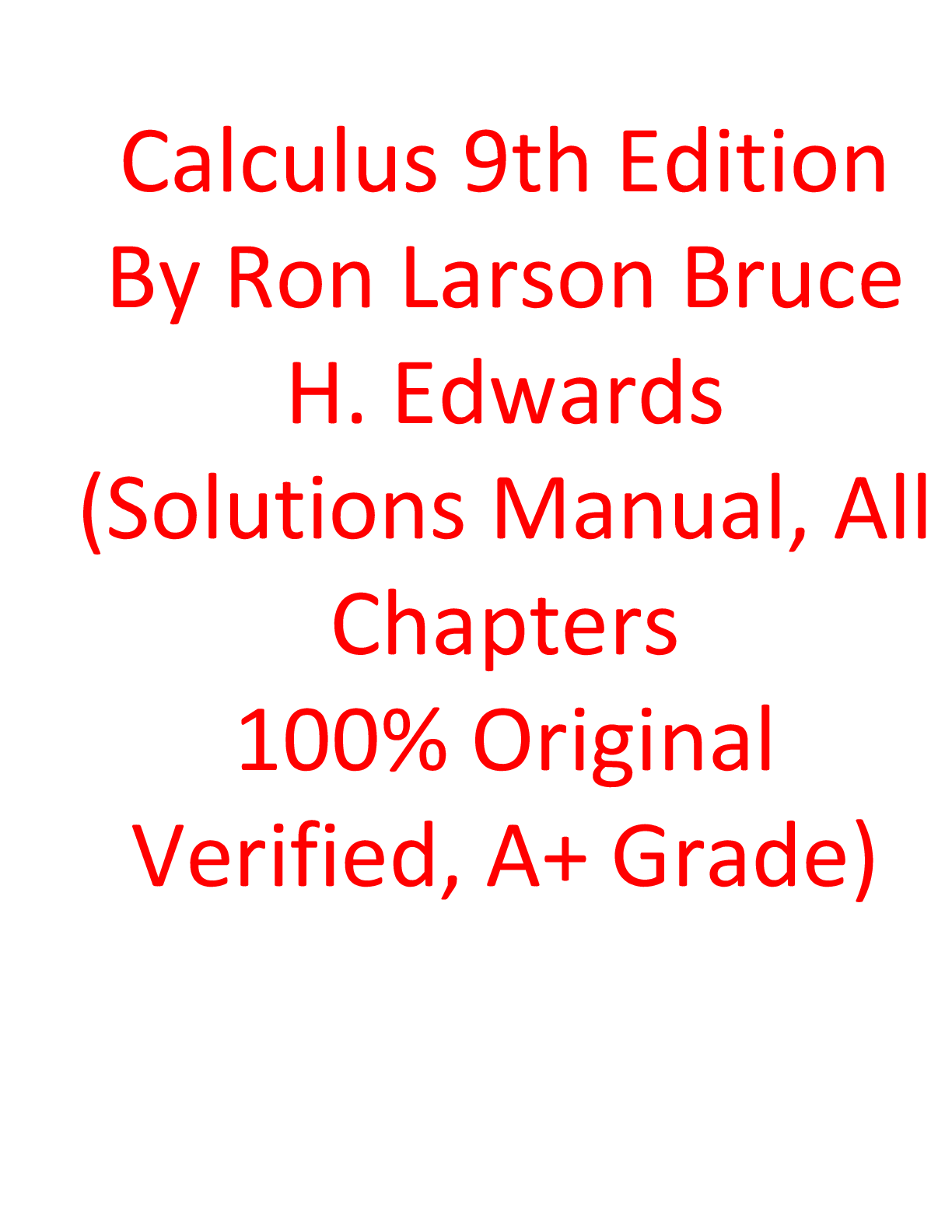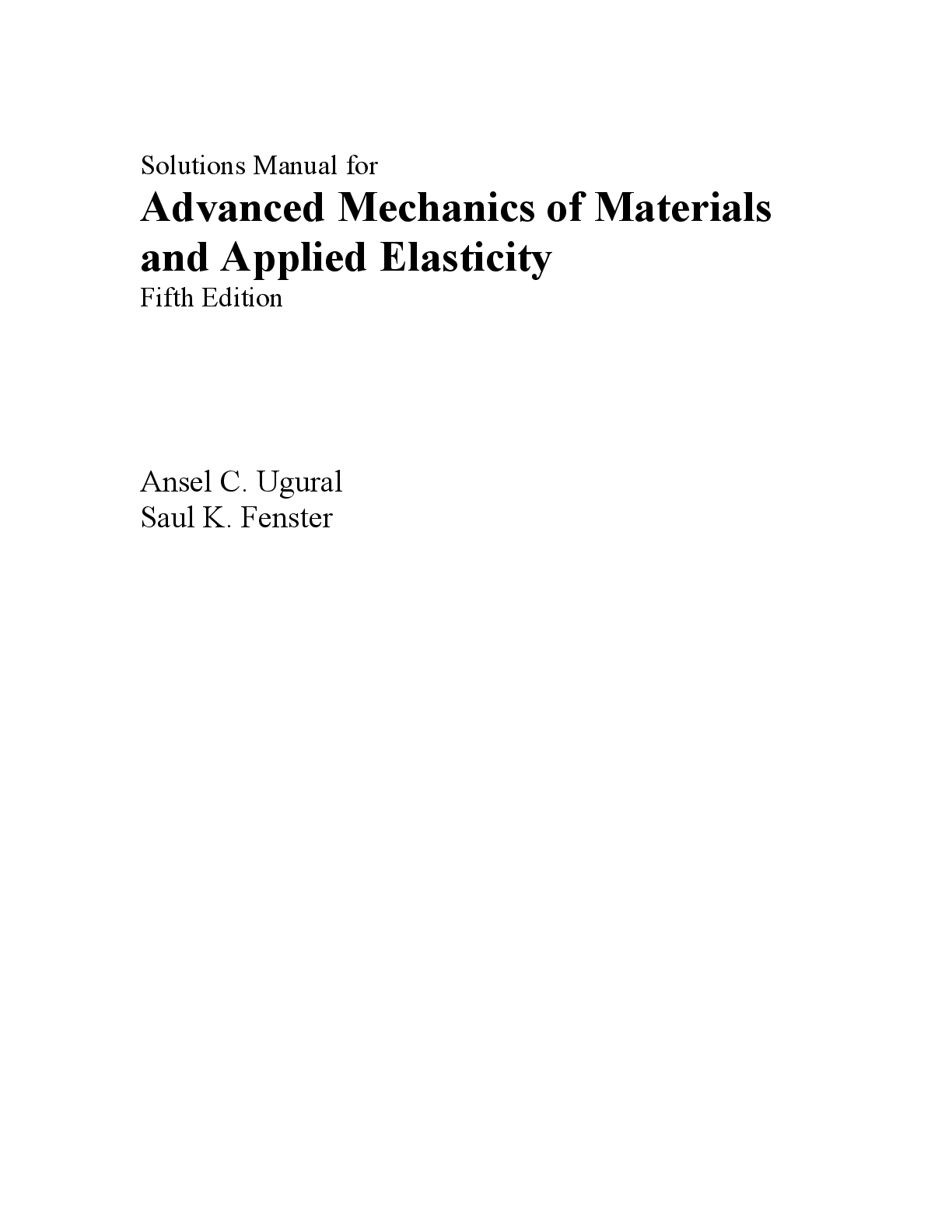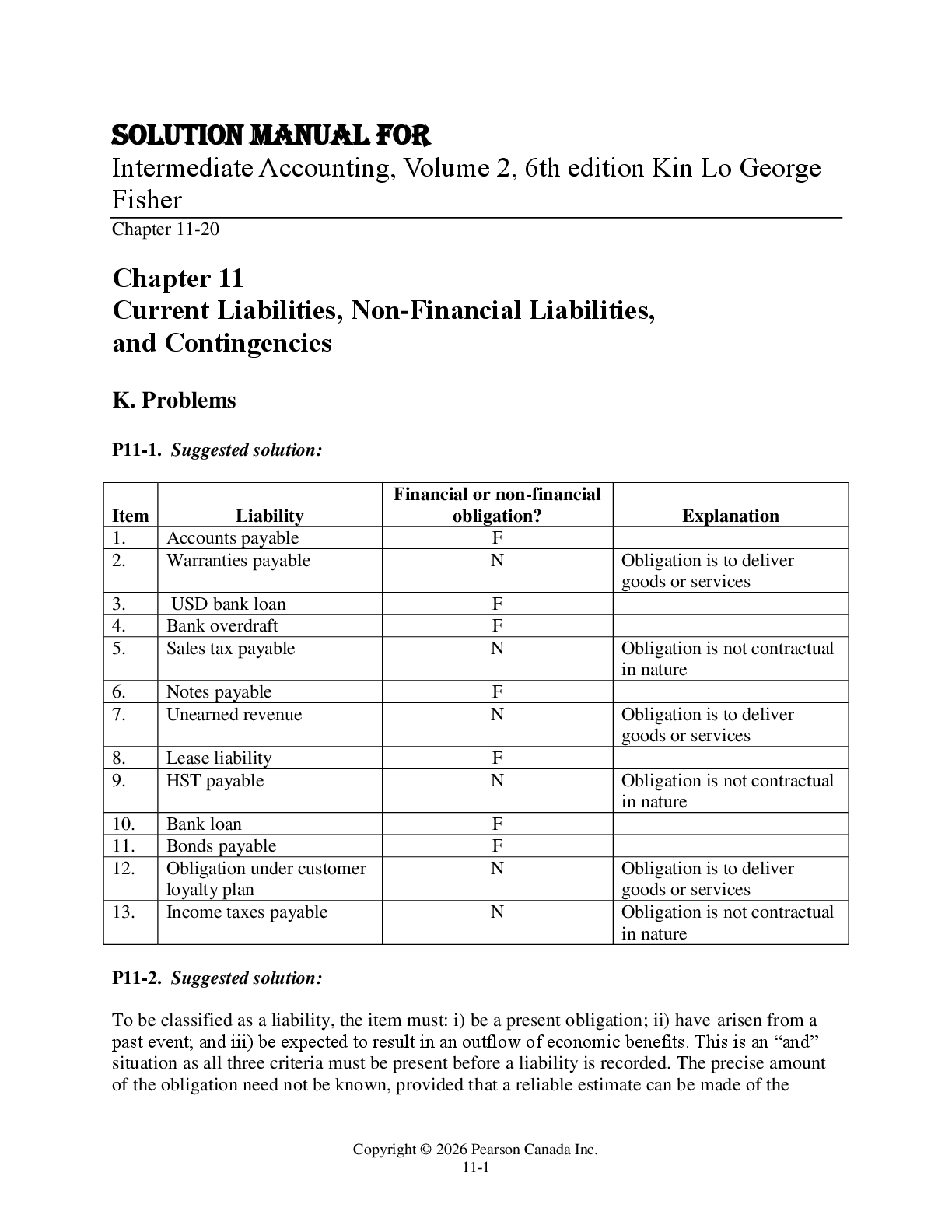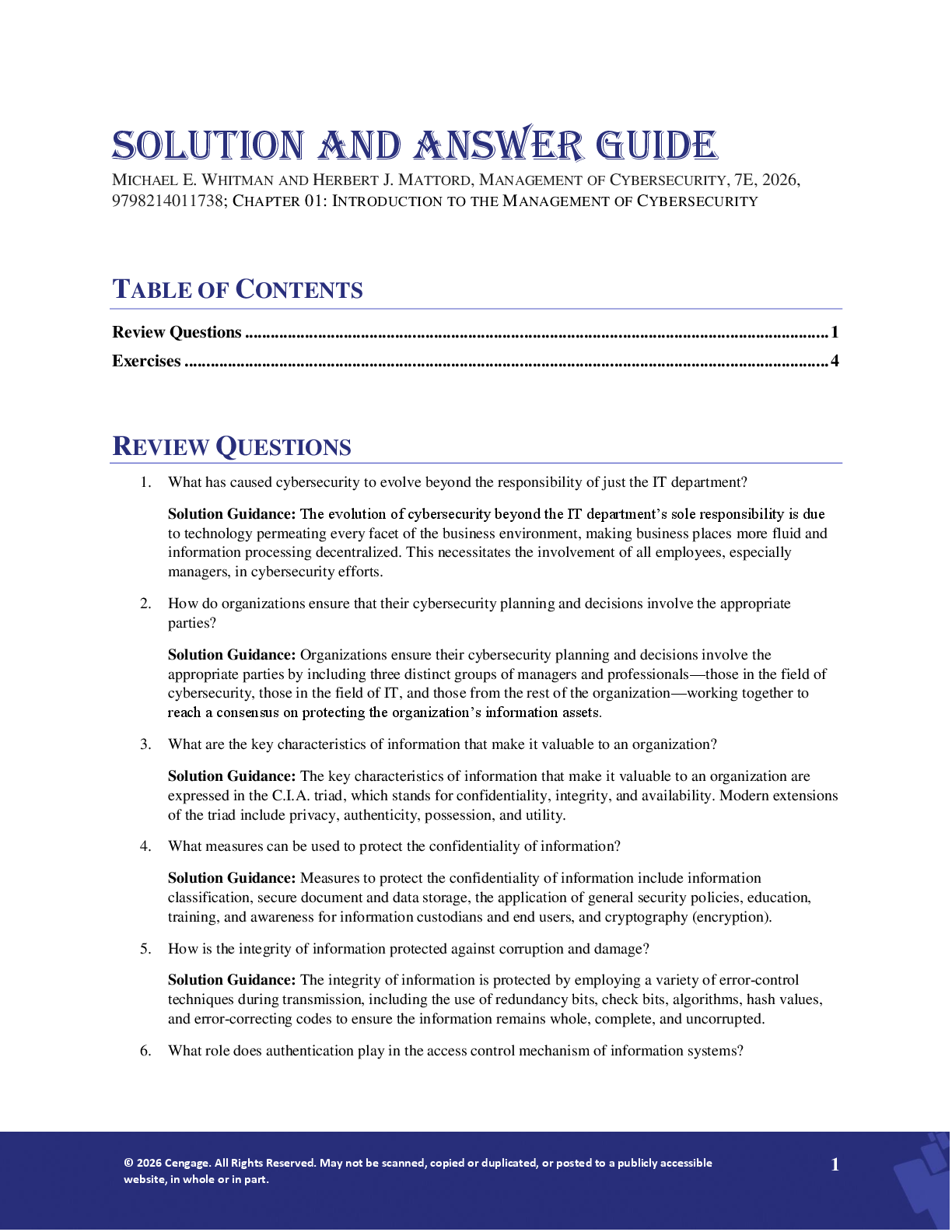Criminal Justice > SOLUTIONS MANUAL > Solution Manual For Criminal Procedure From First Contact to Appeal, 7th Edition by John L. Worrall (All)
Solution Manual For Criminal Procedure From First Contact to Appeal, 7th Edition by John L. Worrall
Document Content and Description Below
Solution Manual For Criminal Procedure From First Contact to Appeal, 7th Edition by John L. Worrall-The instructor’s manual is a comprehensive document that includes a chapter overview, chapter obj ... ectives, a lecture outline with teaching tips, answers to the decision-making exercises in the main text, additional assignments, suggested answers to the end-of-chapter assignments (Review Questions). Criminal Procedure continues to be divided into five parts: (1) Introduction; (2) Search and Seizure; (3) Interrogations, Confessions, and Identification Procedures; (4) The Beginnings of Formal Proceedings; and (5) Trial, Conviction, and Beyond. Chapter 1 is introductory and provides readers with the information necessary to begin studying criminal procedure. In particular, it defines criminal procedure; highlights the due process/crime control dilemma, which is at the heart of all controversies in criminal procedure; discusses the relationship among the courts, including a brief section on how to do legal research; and introduces several issues and trends in criminal procedure. Chapter 1 ends with a detailed overview of the text. Chapter 2 begins by discussing the exclusionary rule, and then considers criminal, civil, and nonjudicial remedies. Remedies are presented early in the text so readers will become aware of how people’s rights can be enforced in the U.S. courts. Chapter 3 provides a framework for studying the Fourth Amendment; specifically, it defines Fourth Amendment terminology and specifies when searches and seizures occur. This chapter also covers the doctrine of justification, focusing on the definitions of probable cause, reasonable suspicion, and administrative justification. Chapters 4 and 5 go on to cover searches and seizures with warrants and without warrants, respectively. Chapter 6 covers actions based on reasonable suspicion, including stops and frisks and investigative detentions, and Chapter 7 covers actions based on administrative justification and consent, including inventories, inspections, checkpoints, school and office searches, drug and alcohol testing, and the like. Chapter 8 focuses heavily on the Fifth Amendment’s self-incrimination clause and then summarizes the proper procedures for conducting interrogations and obtaining valid confessions. Further, it also examines how the Sixth and Fourteenth Amendments govern interrogations and confessions. Chapter 9 discusses identification procedures, including the guidelines for proper pretrial identifications, and also introduces identification procedures used during trial, including the proper questioning of witnesses to assist in valid in-court identifications. Chapter 10 begins by discussing booking, the initial appearance, the probable cause hearing, pretrial release, the preliminary hearing, and the arraignment. This chapter also introduces the rules surrounding discovery. While discovery can occur well into a trial, most often discovery is pretrial in nature; thus, it is appropriate to discuss discovery in this context. Chapter 11 covers prosecutors, grand juries, and defense attorneys, including the constitutional guidelines by which each must abide. Of course, the actions of prosecutors, defense attorneys, and even grand juries matter outside the pretrial context, but readers should be familiar with these important actors before moving into the adjudication section. Finally, Chapter 12 covers plea bargaining and guilty pleas. Again, both can occur well into a trial, but most plea bargains and guilty pleas are undertaken in an effort to avoid trial. Chapter 13, the first of two chapters about the defendant’s rights at trial, examines the right to a speedy trial and the right to an impartial judge and jury. Chapter 14 continues the focus on rights at trial, discussing openness, confrontation, compulsory process, double jeopardy, and entrapment. Lastly, Chapter 15 covers important topics in sentencing as well as appeals and habeas corpus. [Show More]
Last updated: 8 months ago
Preview 5 out of 223 pages

Loading document previews ...
Buy this document to get the full access instantly
Instant Download Access after purchase
Buy NowInstant download
We Accept:

Reviews( 0 )
$14.50
Can't find what you want? Try our AI powered Search
Document information
Connected school, study & course
About the document
Uploaded On
Apr 09, 2025
Number of pages
223
Written in
All
Additional information
This document has been written for:
Uploaded
Apr 09, 2025
Downloads
0
Views
40


